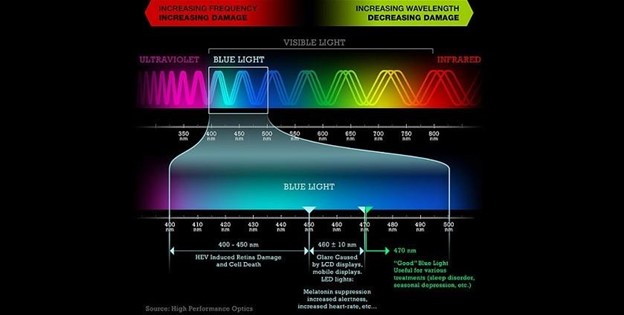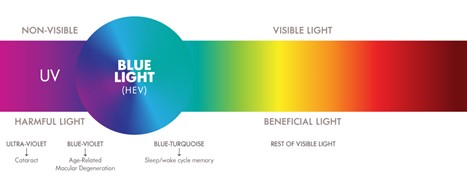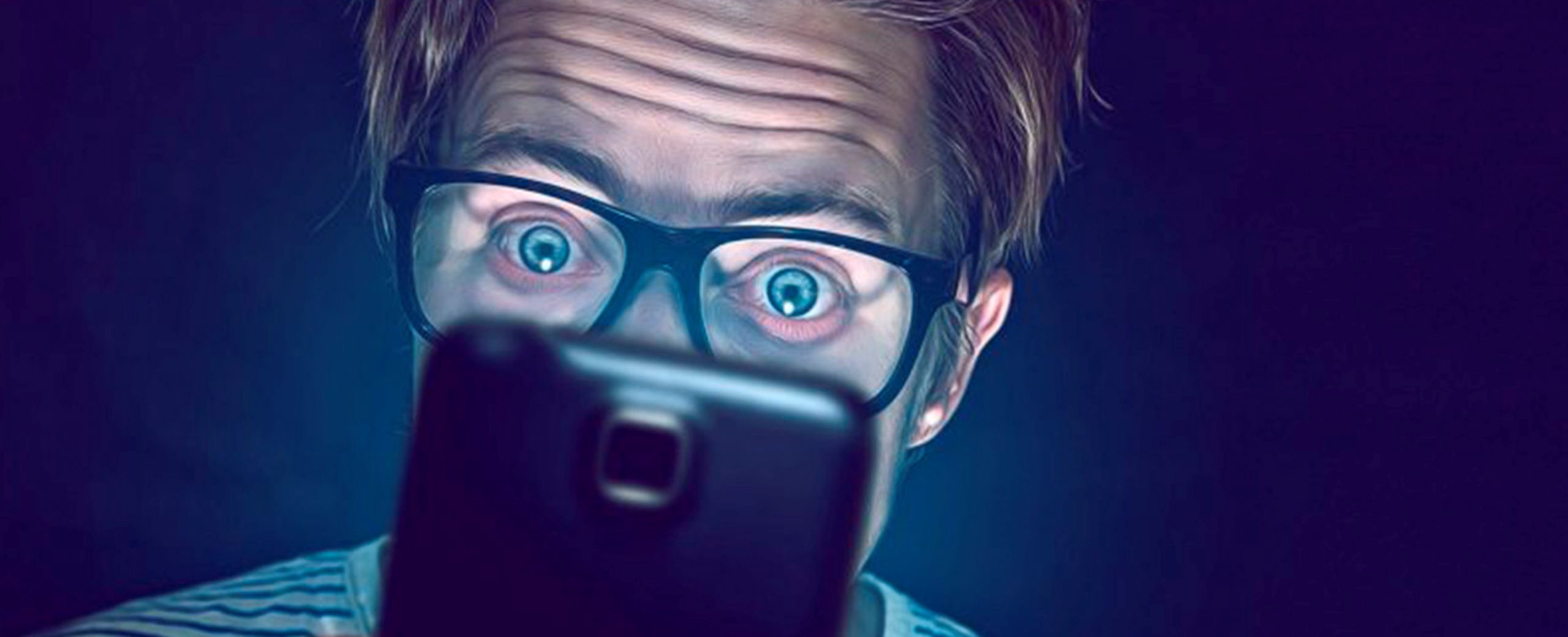Products
Why Do You Need Blue Light Lenses?

You might have heard of blue light or blue control lenses, but what exactly blue light is?
Light is made up of electromagnetic particles that travel in waves. When something produces light, different colours vibrate at different wavelength. These waves emit energy; the shorter the wavelength, the higher the energy they emit.
Human eye is sensitive to one part of this spectrum, which is called visible light. Visible light is the electromagnetic spectrum that is seen as colour e.g. violet, indigo, blue, green, yellow, orange and red. Blue light (or blue-violet light) has a wavelength of approximately 380nm to 500nm, making it one of the high energy visible (HEV) light. Hence, several studies suggest that the exposure to blue end of the light spectrum might cause serious long-term damage to your eyes.
Sunlight is the main source of blue light and being outdoors during the day is when we get the most exposure to it. However, there are also artificial indoor sources of blue light, including the fluorescent and LED globes as well as flat-screen televisions. Most notably, HEV blue light is emitted from the display screens of visual display units (VDU) such as computers, tablets, smart-phones, etc. Naturally, the artificial blue light is much weaker than the sun’s blue light, but nowadays people spend so much of the time indoors in front of VDU that the exposure of blue light starts to add up.
From where does HEV blue light come from?

Are blue light all harmful?
Excessive exposure to blue light can damage the light-sensitive cells in the retina, potentially causing daytime fatigue and sleepless nights. This condition causes the changes that resemble those of macular degeneration, which may lead to permanent vision loss.

But, not all blue light is bad!
In fact, healthy blue light is very important in regulating the body’s natural sleep-wake cycle as the exposure to blue light during daytime helps maintain healthy rhythms. In contrary, too much blue light late at night can disrupt this rhythm, causing difficulty in falling asleep.
Balancing in Digitally Connected World

By staying aware of our relationship to extensive digital usage, we can make smart choices to keep it to a healthy level. Using blue control lenses to filter or reduce blue light absorption is helpful in suppressing the secretion of melatonin, a hormone that regulates sleep-wake cycle.
“What else can I do?”
Surely, it is recommended to always set a limit on your screen time to reduce any symptoms of digital eye strain. On the other hand, the screen brightness should be set slightly brighter than the surrounding lighting as this is to ensure better comfort.
Practising visual hygiene, namely the 20-20-20 rule, is greatly advisable for heavy digital users! For every 20 minutes on screen time or near work, you should look at something 20 feet away for 20 seconds to relieve eye strain. Of course, in order to make sure that your eyes are in their best condition, having regular eye examination is vital in ensuring better productivity. Feel free to look for us to keep track of your eye health!
